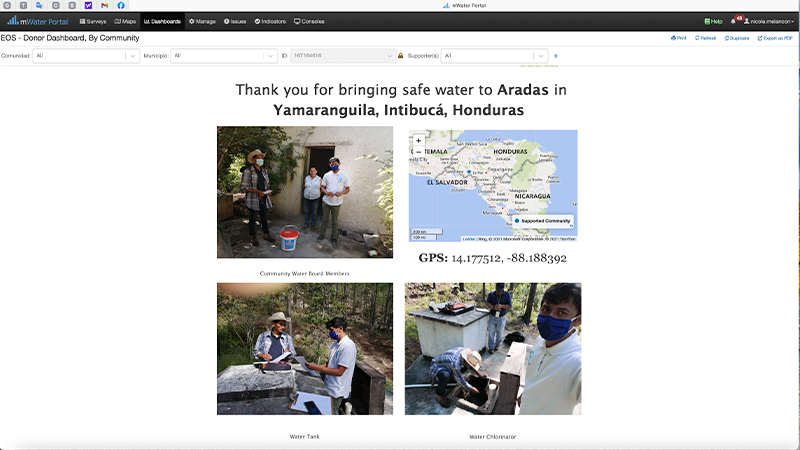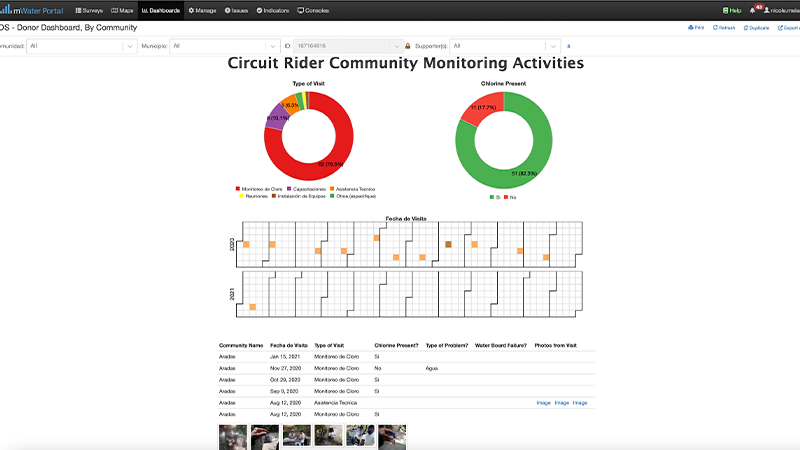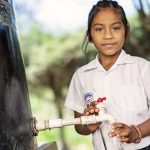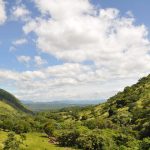EOS launches new supporter and community dashboard on mWater
Authored by: Pat Ward
In May, we launched, the Tap, a new way to give and helps EOS provide long-term sustainability for our water programs to the rural communities we serve. Studies have shown that over 50% of unsupported international community water system projects fail and remain unrepaired because of insufficient operational, technical, and financial capacity, and a lack of ongoing technical and community support within five years. We are working to change that with the Tap. The Tap provides ongoing technical and community support through our Circuit Rider model, starting the moment we install a new chlorinator into a community. Thanks to your generous support, we were able to support an additional 120 communities through the Tap.
For only $30 a month or $360 a year, you can support an entire community and receive real-time information via mWater on the community you are investing in and see the impact your donation is making to empower and save lives.
mWater is a powerful data management tool that is used to collect, clean, manage, analyze, and share water, sanitation, and hygiene data real-time across the board. mWater has greatly improved the way we serve our communities and work in Central America. While we launched mWater in 2019, we are excited to announce that for the first time, EOS can to match donations directly to a specific community and we are now able to provide real-time information to our members of the Tap.
Below is a sample of the information you will receive on the community you invest in.



Through the mWater online platform, our technicians are able to record important community drinking quality results, gather photos, and relevant water system data to graphically present the drinking water quality in the communities that we serve. From the moment community partnerships are established, to chlorinator installations, and for every chlorine and water quality test preformed, up-to-date data allows us to make informed and expedient decisions. Overall, this has improved the efficiency and quality of the work completed in every community we serve.
Check out our new sponsor and community dashboard at the bottom of this page.
What is mWater?
mWater is an opensource “data management platform used to collect, clean, manage, analyze, and share water, sanitation, and hygiene data at any scale”. This powerful tool has been used by “9 national sectors, 743 local districts, and a number of NGOs and multilateral organizations including USAID DIV, The World Bank Innovation Fund,… UNICEF, WHO,” and many more.
How has EOS International used mWater?
EOS has implemented mWater across the board. From the moment community partnerships are established, to chlorinator installations, and for every chlorine and water quality test preformed, up-to-date data allows us to make informed and expedient decisions. mWater has also allowed us to make different dashboards for donors, country directors, tracking circuit rider progress and more. These dashboards are constantly being updated and augmented by every new survey allowing us to troubleshoot and better our surveys based on the results from the dashboards. Overall, this has improved the efficiency and quality of the work completed in every community we serve.
What does it mean to for EOS Supporters?
mWater has allowed EOS to create powerful visuals with real-time data to show supporters exactly how their donations are impacting the access to clean and safe drinking water in Latin America. Ultimately, mWater has created an elevated level of transparency and accountability to you, the EOS team, and the communities we work with. You can see some of the ways EOS has leveraged this tool on the newly interactive website map (under the “Locations” tab). For monthly donors, you will be receiving a personalized dashboard linking you directly to the communities you support, and the work being done there now. This includes photos of the communities, quick facts about the water system, recent visits, and actual reporting on the presence of chlorine in the water supply.




